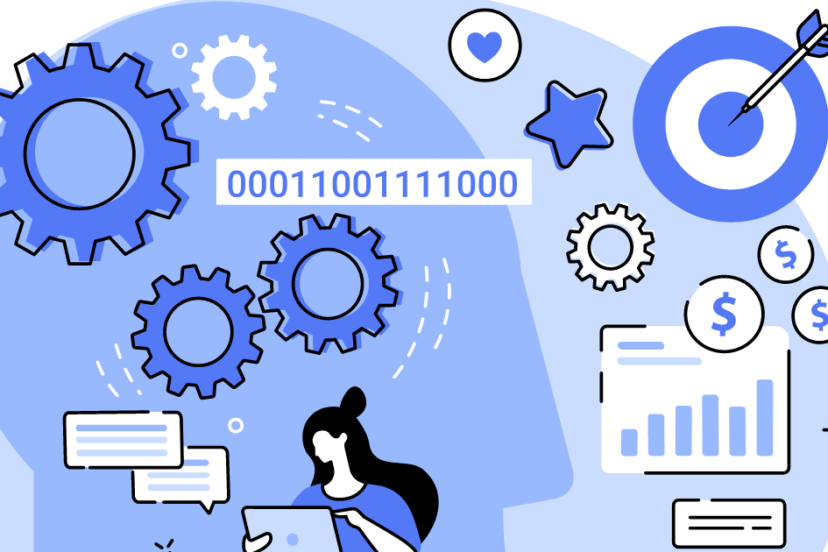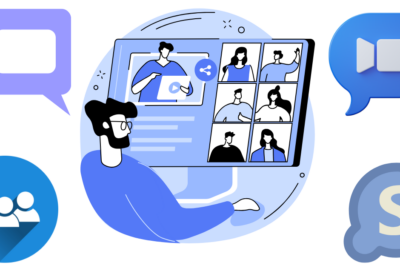How AI Tools for Business Can Drive Innovation and Growth
In today’s digital age, where technology reigns supreme, artificial intelligence (AI) stands out as a game-changer for companies striving to stay ahead in the competitive landscape. But what exactly are AI tools in business and how do they drive innovation and growth for different industries? Join us on an exciting journey as we delve into the world of AI tools. Let us discover how they empower companies to unleash their full potential, revolutionize operations, and delight customers like never before.
Get ready to explore the fascinating realm of AI-driven insights. Learn how they’re reshaping the way businesses operate and grow. So, buckle up, and let’s embark on this thrilling adventure into the transformative power of AI in business!
Introduction to AI Tools for Business
Artificial intelligence encompasses a wide range of technologies that enable machines to perform tasks that traditionally require human intelligence. In the context of business, AI tools include machine learning algorithms, natural language processing, robotic process automation, and more. These tools can analyze vast amounts of data, extract insights, and automate processes, thereby revolutionizing how companies operate.
Types of AI Tools for Business
There are various types of AI tools that businesses can leverage to improve operations, enhance decision-making, and drive growth. These tools utilize artificial intelligence techniques to automate tasks, analyze data, and generate insights. Below are some common types of AI tools for business:
1. Machine Learning Platforms:
Machine learning platforms enable businesses to build, train, and deploy machine learning models without extensive programming knowledge. These platforms provide a user-friendly interface for tasks such as data preprocessing, model training, and evaluation. Businesses can use machine learning platforms to develop predictive models for tasks like demand forecasting, customer churn prediction, and fraud detection.
2. Natural Language Processing (NLP) Tools:
NLP tools analyze and interpret human language, enabling businesses to extract insights from textual data. These tools can perform tasks such as sentiment analysis, entity recognition, and language translation. Businesses utilize NLP tools to automate customer support through chatbots, analyze customer feedback from reviews and social media, and extract insights from large volumes of unstructured text data.
3. Robotic Process Automation (RPA) Software:
RPA software automates repetitive, rule-based tasks by mimicking human interactions with digital systems. These tools can perform tasks such as data entry, invoice processing, and report generation across various software applications. Businesses implement RPA software to streamline operations, reduce errors, and free up employees’ time for more value-added activities.
4. Predictive Analytics Platforms:
Predictive analytics platforms utilize AI algorithms to analyze historical data and forecast future outcomes. These platforms can identify patterns, trends, and anomalies in data to make predictions about customer behavior, market trends, and business performance. Businesses leverage predictive analytics platforms to optimize inventory management, personalize marketing campaigns, and make data-driven strategic decisions.
5. Computer Vision Systems:
Computer vision systems enable computers to interpret and understand visual information from images or videos. These systems can perform tasks such as object detection, image classification, and facial recognition. Businesses use computer vision systems for applications like quality control in manufacturing, automated inspection in agriculture, and facial recognition for security purposes.
6. Virtual Assistants and Chatbots:
Virtual assistants and chatbots use AI to understand and respond to user queries in natural language. These tools can provide customer support, automate repetitive tasks, and facilitate self-service interactions. Businesses deploy virtual assistants and chatbots on websites, mobile apps, and messaging platforms to enhance customer experience, improve efficiency, and reduce response times.
Understanding Innovation and Growth
Innovation is the process of introducing new ideas, products, or methods that create value for businesses and their customers. Companies need to innovate continuously to adapt to changing market dynamics and customer preferences. Growth, on the other hand, refers to the expansion of a company’s operations, revenue, and market share over time.
The Roles of AI Tools for Business in Driving Innovation and Growth
AI plays a crucial role in driving innovation by enabling companies to unlock new possibilities and create value in ways that were previously unimaginable.
Enhancing Efficiency and Productivity
AI tools play a crucial role in driving innovation and growth by enhancing efficiency and productivity across various industries. These tools automate repetitive tasks, analyze vast amounts of data quickly, and provide valuable insights to businesses. By streamlining processes and reducing human error, AI tools allow organizations to optimize resource allocation, improve operational efficiency, and ultimately increase productivity. This efficiency boost translates into cost savings and faster delivery of products and services, providing tangible value to businesses and consumers alike.
Fostering Data-Driven Decision Making
Another significant role of AI tools in driving innovation and growth is their ability to foster data-driven decision making. These tools leverage advanced algorithms to analyze complex data sets and extract actionable insights. By identifying patterns, trends, and correlations within data, AI tools enable organizations to make informed decisions that are based on evidence rather than intuition alone. This data-driven approach helps businesses optimize strategies, mitigate risks, and seize new opportunities, leading to more successful outcomes and sustained growth in a competitive market landscape.
Facilitating Personalization and Customization
AI tools also facilitate personalization and customization, which are essential drivers of innovation and growth in today’s consumer-centric environment. Through machine learning algorithms, these tools can analyze consumer behavior, preferences, and interactions to deliver tailored experiences and products. Whether it’s personalized recommendations, targeted marketing campaigns, or customized products and services, AI enables businesses to meet the unique needs and preferences of individual customers at scale. This level of personalization not only enhances customer satisfaction and loyalty but also drives innovation by continuously adapting offerings to evolving consumer demands.
Empowering Creativity and Innovation
Furthermore, AI tools empower creativity and innovation by augmenting human capabilities and enabling new possibilities. Through techniques like natural language processing, image recognition, and generative modeling, these tools assist creative professionals in ideation, design, and content creation. By automating repetitive tasks and providing intelligent suggestions, AI frees up valuable time for creative experimentation and exploration. This collaborative partnership between humans and AI fosters a culture of innovation, where novel ideas can flourish, and groundbreaking solutions can be developed. As a result, businesses can stay ahead of the curve, drive industry-wide innovation, and fuel sustainable growth in the long term.
Overcoming Challenges in Adopting AI Tools for Business
While the benefits of AI for business are compelling, organizations may encounter challenges in adopting AI tools:
- Data Privacy and Security Concerns: Businesses must address concerns related to the security and privacy of sensitive data used by AI systems.
- Integration with Existing Systems: Integrating AI tools with legacy systems and workflows can be complex and require careful planning.
- Skill Gap and Training Needs: Organizations need to invest in training employees to leverage AI tools effectively and mitigate the risk of skill shortages.
Conclusion
In conclusion, the transformative impact of AI on business innovation and growth cannot be overstated. From streamlining operations and enhancing customer experiences to enabling data-driven decision-making, AI has become an indispensable tool for companies looking to thrive in today’s fast-paced environment. As we’ve explored throughout this article, AI empowers businesses to adapt, innovate, and capitalize on emerging opportunities like never before.
By embracing AI strategically and responsibly, businesses can unlock new possibilities, drive sustainable growth, and ultimately, shape the future of their industries. So, as we move forward, let’s continue harnessing the power of AI to propel innovation, foster growth, and create a brighter, more prosperous future for businesses worldwide.
FAQs
How can AI tools help businesses innovate?
AI tools enable businesses to analyze data, identify patterns, and anticipate trends, empowering them to develop innovative products and services tailored to customer needs.
What are some challenges associated with implementing AI in business?
Challenges include data privacy concerns, ethical considerations surrounding AI algorithms, and the need for skilled talent to develop and implement AI solutions.
How can businesses leverage AI to enhance customer experiences?
By analyzing customer data in real-time, AI algorithms can personalize marketing messages, provide proactive support, and deliver seamless customer experiences across various touchpoints.
What role does predictive analytics play in business growth?
Predictive analytics powered by AI enables businesses to make data-driven decisions, anticipate market changes, and identify opportunities for growth ahead of the competition.
What is the future outlook for AI’s impact on business innovation and growth?
AI’s role in driving business innovation and growth is expected to grow as technologies continue to evolve, enabling businesses to innovate faster, stay competitive, and unlock new growth opportunities.




